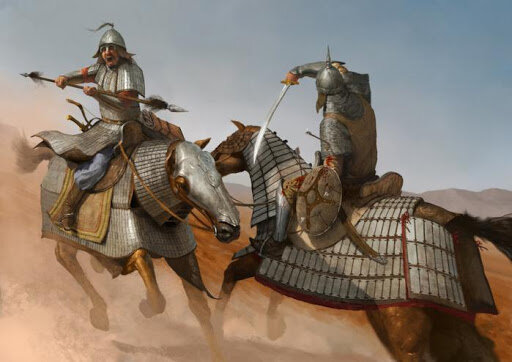In 1155 (or 1162), the Mongol prince Yesugei was hunting in the steppe with his nukers. He accidentally met a noble merkit Eke-Chileda, who was on his way home with his betrothed — the beautiful Oelun, to play a wedding. Esugei enlisted the support of his brothers and then attacked the caravan and took the girl. Soon she bore him Temujin and several other sons.

But the nomads remembered the offense for a long time. And the Merkits attacked Temujin’s headquarters many years later — he did not have time to prepare for battle and fled. In 1181 or so his own wife Borte was captured and returned home pregnant. The first-born son was named Dzhuchi — “stranger”.
How did Genghis Khan take revenge on the hostile tribe for the scandal of his beloved? Who are the Merkits and what became of them?
In the 12th century, the Merkits were one of the 5-6 largest tribal unions on the Mongolian Plateau. At that time they lived in the Selenga region — in the south of what is now Buryatia and northern Mongolia. Their closest relatives were the Naimans, Kereites, and Kidans, and the Hamag-Mongols, tribesmen of Genghis Khan, to a lesser extent.
Because of their residence on the border of the taiga and steppe, they are often called a clan of Turkic, Samoyed or Tungus-Manchurian origin. There is no special evidence for this hypothesis, but it is known that they practiced elements of agriculture and had reindeer. At least, there is a report that they forced their captives to grind flour.

The Merkites were known as excellent archers — even the name itself translates as “marksmanship”. In addition, words with the same root are used in phrases that imply magic, divination, supernatural powers. Therefore, the word “Merkits” is often interpreted as “wise”.
Despite the fact that this tribal union lived on the outskirts of the Mongol world, they actively participated in big politics. Thus, as early as the end of the 11th century, part of the Merkits and Kereits converted to Nestorian Christianity. The archbishop of Merv asked the patriarch in Baghdad to release them from certain fasts, which were hard to observe with their nomadic way of life.
In the 11th century, the Merkites, along with their allies, invaded the territory of the Qidan Liao state. But then many of them left to Central Asia and founded the Karakitai Khanate with the related Kidans. And those who remained in place, from that time the main opponents were the Hamag Mongols, who gradually united under the rule of the Borjigin family.
Ambagai, one of Esugei’s predecessors in governing the Mongol tribes, was on friendly terms with the Merkit leader Tudur-Bilge. Once the khan sent ambassadors to him with a proposal to support his comrade in battle. But Tudur-Bilge preferred to keep neutrality, and the feud began. Thus, Yesugei inherited the conflict with this tribe, which explains the bride theft.
Temujin, in order to rescue his beloved Borte, had to ask for help from his twin Jamukha and named father Tooril-khan. Together the allies easily defeated and dispersed the Merkits — the survivors joined the Oirats and Khori-Tumats, and the elite found patronage of the Kipchak tribe Kangli. As a result, by the time of the proclamation of the Mongol Empire, they were no longer politically important, but still survived as a people.
Genghis Khan entrusted the war with them to his firstborn son Dzhuchi, presumably to rid him of his reputation as a “Merkit gift”. He waged a series of campaigns against them over several years. It was because of the Merkitian refugees that the Mongols first crossed swords with the Kipchaks, and after that a full-fledged war began. In 1217, Juchi and Subudai finally defeated the Merkits in the Chu valley. The sons of their leader, nephews of the very Eke-Chiledu, laid down their heads there.

But it is impossible to say that the mighty former tribe after that finally passed into history. One of wives of Genghis Khan was Merkitka Khulan, the same origin were spouses of great khans Ugedei and Guyuk. In the composition of modern Kazakhs, Kirghiz, Kalmyks there are clans with the name Merkit.
